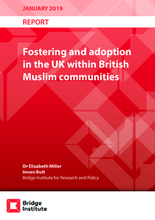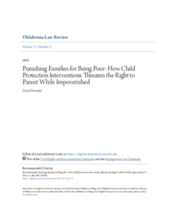Displaying 961 - 970 of 2214
This analysis examines both historical and contemporary approaches to addressing religion and race in child welfare policy and practice, with a particular focus on adolescent youth.
This study investigated out-of-home placements in Finland among children with a biological mother having schizophrenia, and their relation to maternal characteristics and adverse perinatal health outcomes of the offspring.
Building on discourse analyses of custody deprivation cases, the authors of this paper call for greater understanding of how disability intersects with parenting and the need for an improved support system.
This short human rights in action article takes a critical approach to the translation of policy to practice and highlights risks involved with haste, outcomes measured in numbers and unrealistic timeframes, and rapidly transforming practice with nascent investment in a country’s capacity to assess and respond to the real needs of children and families within their communities.
This study explored the personal self-care practices of foster parents in one southeastern state in the US.
This exploratory, qualitative, multi-case study sought to understand, from the perspective of successful foster alumni college students, the role and influence of family members.
This report examines the challenging relationship between Islam and fostering and adoption in the UK, and efforts currently being made to address it.
When children are adopted from the care system staying in touch with members of their birth families must be considered.This research paper draws on the English experience.
The Routledge Handbook of Critical Social Work brings together the world’s leading scholars in the field to provide a cutting-edge overview of classic and current research and future trends in the subject.
This article from the Oklahoma Law Review explores the US child welfare system and the practice of family separation of poor families.



